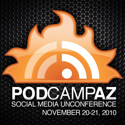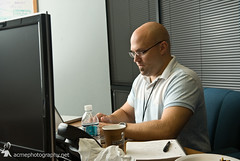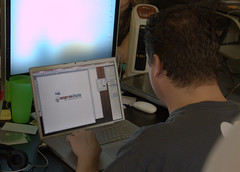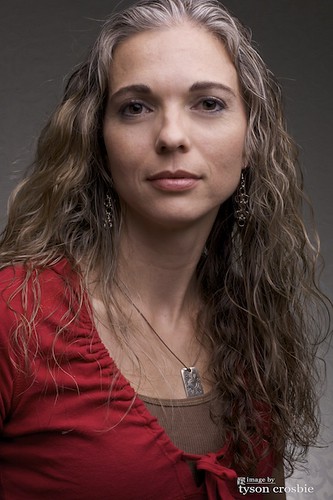Archive for category Phoenix events
PodCamp AZ 2010 badge hackery
Posted by Ms. Herr in events, geekery, Phoenix, Phoenix events on September 21, 2010
This morning, I received an email from the WordCamp Phoenix 2011 regarding registration (I’m already registered) and badging up. Being the geek conference groupie that I am, I had to badge up. I added the “Meet me at” section you see over there in the sidebar, but the WordCamp badge was all by itself and looked lonely. I decided I needed to add badges for other events I’m attending, but of the ones I’m currently reg’d for (PodCamp AZ 2010 and Startup Weekend Phoenix), neither has badges. The @podcampaz avatar, however, has the event dates on it, so I thought I’d see if I could make my own.
Before you go thinking to yourself, “Oh, that’s easy!” remember that I am not a code monkey. I’m a groupie. Big difference.
Anyway, long story short … OK, short story short, I made a badge with working link and everything. If you like it, and want one for yourself, you’re welcome to this one (code below), at least until PodCamp organizers publish their own.

<a href=”http://podcampaz.com” title=”PodCamp AZ 2010″><img src=”http://msherrwhenonline.com/wp-content/uploads/Twitter_podcampaz_2010_small.png” alt=”PodCamp AZ 2010″ title=”PodCamp AZ 2010″ style=”border:none;” /></a>
I’m super excited with this little bit of ingenious hacking. No doubt I’m overstating things. Regarding the ingenuity. And the hacking. But I’m not overstating the excited part. Really, it’s the little things. 🙂
Congratulations
Your first AWS Elastic Beanstalk Node.js application is now running on your own dedicated environment in the AWS Cloud
This environment is launched with Elastic Beanstalk Node.js Platform
What’s Next?
- AWS Elastic Beanstalk overview
- AWS Elastic Beanstalk concepts
- Deploy an Express Application to AWS Elastic Beanstalk
- Deploy an Express Application with Amazon ElastiCache to AWS Elastic Beanstalk
- Deploy a Geddy Application with Amazon ElastiCache to AWS Elastic Beanstalk
- Customizing and Configuring a Node.js Container
- Working with Logs
building accessible websites
Posted by Ms. Herr in blogging, marketing & advertising, Phoenix events, the biz side on November 12, 2008
Gabe Vega of The Blindtechs Network gave a presentation on accessibility and usability at Refresh Phoenix last night (download PDF version here). The age-old wisdom is that you don’t know what you don’t know, and many of us sighted folk have probably never given a second thought as to how accessible our sites are to individuals who need screen readers and other assistive technologies to use our sites. We evaluate sites based on visual, functional and user experience aesthetics. Gabe is blind, which mean he evaluates sites based on accessibility aesthetics.
Gabe’s presentation walked through a handful of sites with various accessibility and usability issues. One example was the site of a local businessperson built using WordPress. The primary critique of the site was that blog post titles were not tagged as headers in the source code, meaning that a screen reader has no way of discerning its importance. All users skim headings to find the content we are most interested in. Sighted users look for changes in text size, font, and color. Blind users, via screen readers, look for demarcating tags. Thus, a screen reader ‘skimming’ the site completely skips over the post title to the comments section. And what good are comments if you don’t know what people are commenting on.
I mention the WordPress site because it is most relevant to my own sites, namely the one you’re reading right now. Ms. Herr when online is a WordPress.com hosted site using one of their standard theme templates. Curious if the title-not-tagged-as-header problem varied by theme, I turned on VoiceOver (fn+command+F5) and tried to navigate this site. The result: TOTAL FAIL. Katy, my reader, spoke the name of my blog, but nothing else. I’m guessing it’s one (or two) of two things:
- The theme I’ve selected doesn’t not include the proper tags for accessibility.
- I suck at using VoiceOver.
I have plans to redesign Ms. Herr when online in the near future. Even though I’m not a developer, I’m going to attempt to do it myself (wish me luck). After Gabe’s presentation, you can bet I’ll be testing the design for accessibility (assuming I can figure out how to not suck at using VoiceOver).
Bottom line, a basic understanding of accessibility and usability is important to anyone involved in the creation of websites. As a client, you need to know to ask your web designed and development provider to integrate usability into your site’s design. As a provider, you need to know how to design for accessibility.
And if you haven’t done it already, I’d encourage you to look at your own sites for accessibility. Check out W3C Web Markup Validation for one great tool (thanks @scottyj). If you don’t have the time or the know-how to make the fixes, or the time to self-teach, hire someone who does.
Congratulations
Your first AWS Elastic Beanstalk Node.js application is now running on your own dedicated environment in the AWS Cloud
This environment is launched with Elastic Beanstalk Node.js Platform
What’s Next?
- AWS Elastic Beanstalk overview
- AWS Elastic Beanstalk concepts
- Deploy an Express Application to AWS Elastic Beanstalk
- Deploy an Express Application with Amazon ElastiCache to AWS Elastic Beanstalk
- Deploy a Geddy Application with Amazon ElastiCache to AWS Elastic Beanstalk
- Customizing and Configuring a Node.js Container
- Working with Logs
What did I do this weekend? ummm…
Posted by Ms. Herr in events, Phoenix events, the biz side on October 20, 2008
This one time… at Phoenix Startup Weekend… a whole group of guys and a lone girl (that’s me), came together to create a new company called Reserve Chute. The basic concept is a personal data backup app that enables users to grab their data from online sources like GMail, Delicious, yada, yada, and save them locally on their own machices. Think about how much stuff you have online, stuff you’ve used to manage your projects, build your online reputation, and communicate with all the really cool people in the world. Thank about what you happen if any one of the services or apps went offline, temporarily or permanantly. Poof. Gone. Bye bye. Wouldn’t it be nice to know you had a money… errr, data jar… in your backyard just in case Web 2.0 becomes web two point OH NO!
The code ninjas (that’s not me) hacked some elegant sweetness for last night’s demo. We should have a working JumpBox prototype in a couple of days (see Sean’s comment below about timing), but the site is live and you can sign up for beta.
Do it. Do it. NOW!!!
Shout out to all the peeps involved in this project: Sean Tierney • Brent Spore • Justin Crossman • Sunny Thaper • Jose Diaz • Curtis Miller • Brian Roy • Byron Bowerman • Remi Taylor • Patrick Harter • Jim Barrows
And major thanks to Adam Nollmeyer (Acme Photography) and Chris Lee for the pics.
Congratulations
Your first AWS Elastic Beanstalk Node.js application is now running on your own dedicated environment in the AWS Cloud
This environment is launched with Elastic Beanstalk Node.js Platform
What’s Next?
- AWS Elastic Beanstalk overview
- AWS Elastic Beanstalk concepts
- Deploy an Express Application to AWS Elastic Beanstalk
- Deploy an Express Application with Amazon ElastiCache to AWS Elastic Beanstalk
- Deploy a Geddy Application with Amazon ElastiCache to AWS Elastic Beanstalk
- Customizing and Configuring a Node.js Container
- Working with Logs




